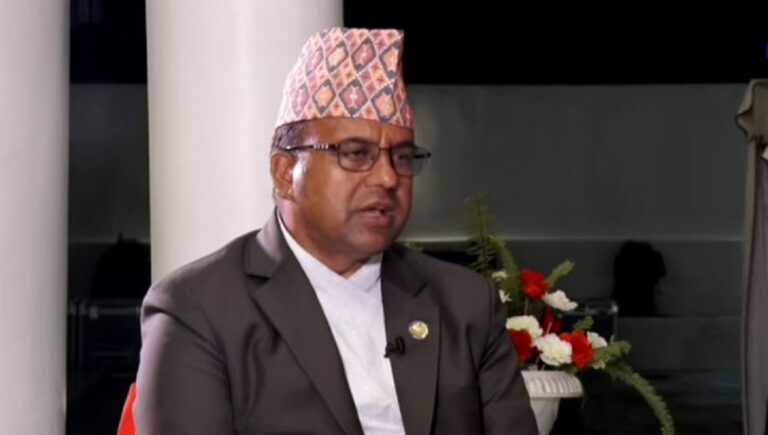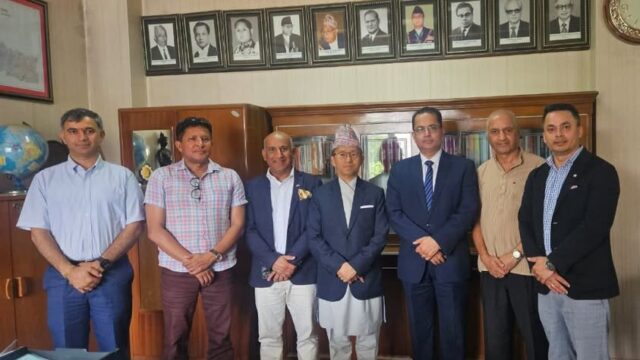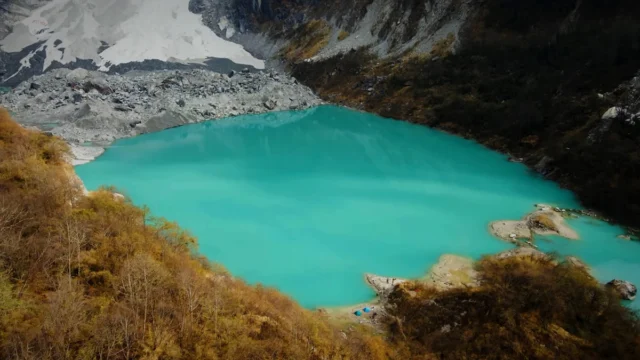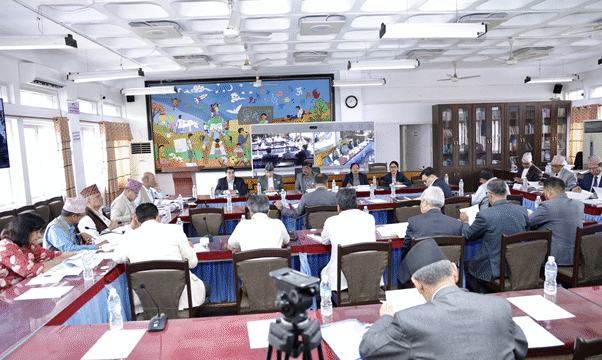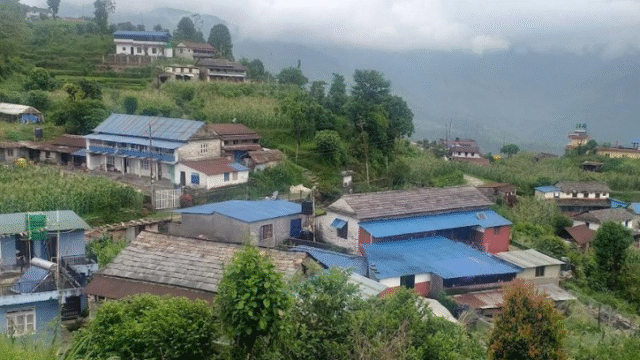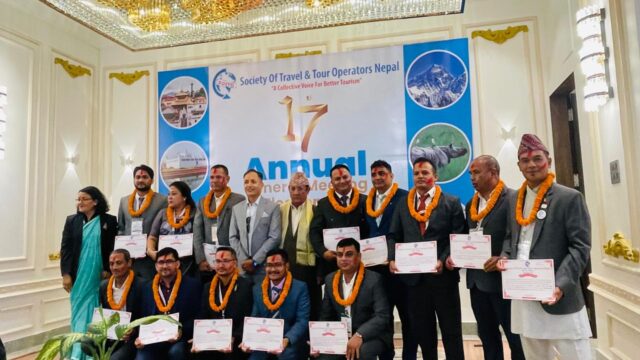Minister for Culture, Tourism, and Civil Aviation, Badri Prasad Pandey, has made an emphatic call for national and international solidarity in preserving the Himalayas, underscoring that these majestic mountains are not just natural wonders, but the very heartbeat of the Earth and lifeline of human existence.
Speaking at the ‘Himalayan Climate Charter’ Conference held in Kathmandu today, Minister Pandey stressed that the conservation of the Himalayas is directly linked to the protection of humanity itself. “Saving the Himalayas is not merely an environmental obligation, it is an act of safeguarding human existence,” he declared.
Himalayas: The Heart of the Earth
Minister Pandey urged that the Himalayas should be recognized not just as Nepal’s pride but as a shared global heritage, a climate-regulating force that balances the ecosystem of the entire planet. “The Himalayas are the heart of the Earth,” he said, “and their protection is not a choice, but a necessity for the survival of generations to come.”
He raised grave concerns over the growing climate crisis in the Himalayan region, highlighting visible and alarming signs such as the rapid melting of glaciers, outbursts of glacial lakes, increased frequency of floods and landslides, and the resulting adverse effects on Nepal’s water resources, biodiversity, tourism industry, and the livelihoods of local communities.
Clean Himalaya Strategy Nearing Completion
Minister Pandey also announced that the Government of Nepal is in the final stages of preparing the “Clean Himalaya Strategy 2082”, a comprehensive five-year action plan aimed at addressing the critical environmental issues facing the Himalayan region. The strategy is designed to focus on key areas including:
- Waste management in high-altitude areas
- Environmental restoration and conservation
- Promotion of responsible tourism
- Youth leadership and community engagement for sustainable practices
- Encouragement of eco-friendly mountaineering and trekking policies
He emphasized that the conservation of the Himalayas is not a regional agenda but an existential issue for the entire planet and its future generations. As such, he called on international financial institutions to invest in climate solutions for mountain nations like Nepal.
A Call for Climate Justice and Responsible Tourism
Minister Pandey also directed his message to stakeholders in the tourism sector, urging them to embrace and promote responsible tourism models that respect nature and prioritize long-term sustainability over short-term profit. He stressed that tourism, while being one of Nepal’s key economic drivers, must align with environmental preservation and community benefit.
Global Solidarity Echoed in the Charter
The conference was jointly organized by BYN Blackyak Group, in collaboration with the Nepal Mountaineering Association, Khumbu Pasang Lhamu Rural Municipality, and the Sagarmatha Pollution Control Committee. It served as a global platform to draw attention to the alarming environmental degradation in the Himalayan region and to unite governments, private sector players, and local communities under one climate-focused charter.
The participating organizations signed a joint declaration expressing their concern over the intensifying climate crisis in the Himalayas. The declaration stressed the need for reducing carbon emissions globally, while also valuing the indigenous knowledge of the mountain communities who have coexisted with the Himalayas for generations.
A Wake-Up Call from the Top of the World
Speaking at the event, Mr. Kang Tae Soon, CEO of Blackyak Group, stated, “The silent warning from the Himalayas is loud and clear, changes that start from the highest points on Earth will soon reach the lowest. Climate change is now the collective issue of all humanity.”
He further added, “This declaration is not just a promise. It is a unified call for climate justice, and we believe this message will resonate around the world and lead to meaningful change.”
Mr. Kang’s remarks reinforced the urgent need for global cooperation and the role of influential organizations and individuals in addressing the climate crisis not only in word but through concrete, accountable action.
Integrating Local Wisdom and Scientific Solutions
One of the key messages that emerged from the conference was the integration of scientific knowledge and local wisdom. The Himalayan communities, having coexisted with these mountains for centuries, offer deep environmental insights and adaptive strategies that can complement modern climate science.
Participants highlighted that the Himalayan region is more than a geographical zone, it is a living ecosystem, a cultural treasure trove, and a vital freshwater source for billions of people across Asia. Protecting it requires local, national, and global synergy, with active participation from governments, NGOs, businesses, and communities.
The Road Ahead
The Himalayan Climate Charter Conference concluded with a strong message of hope, responsibility, and global solidarity. As climate change continues to threaten fragile mountain ecosystems, Nepal is taking a leadership role in calling for immediate, unified action.
Minister Pandey reiterated that the Clean Himalaya Strategy will be implemented with urgency, and its success will depend on the support and cooperation of all, from international donors to local citizens, from trekking agencies to policy-makers.
As the world stands at a crossroads, the Himalayas serve as a powerful symbol of both the beauty and fragility of our planet. Their protection is no longer optional, it is a collective duty to our planet, our people, and our posterity.
